The Lewes Legacy:
The official opening of our
Rowland Wood reserve
Originally published in the Spring 2012 Sussex Butterfly Report
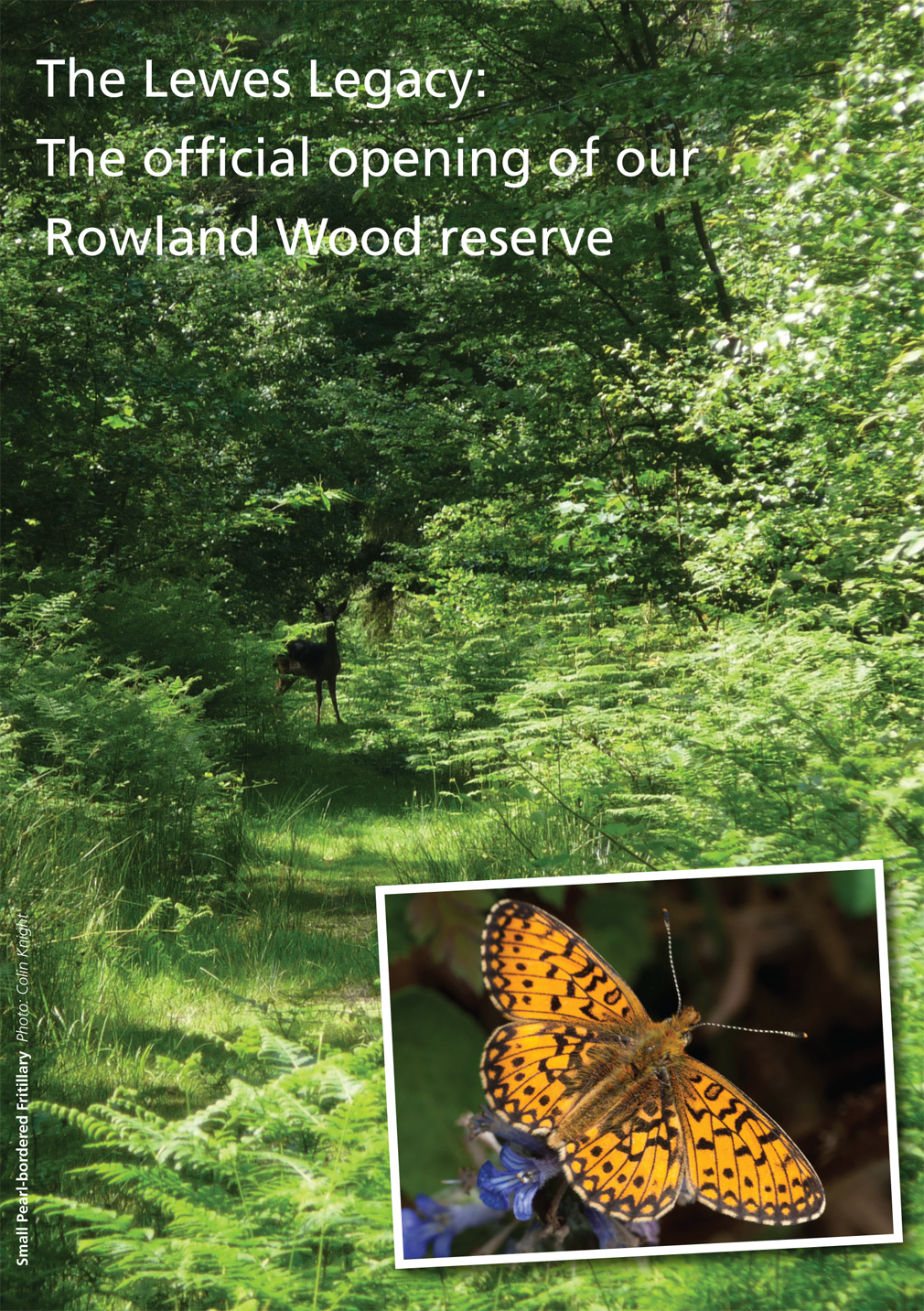 Field Pansy
Field Pansy
On 11th June 2011 a crowd of people gathered in a beautiful woodland glade near Laughton in East Sussex. This was a big day for the Sussex Branch of Butterfly Conservation. There was lemon drizzle cake and a horse and it was (mostly) raining. For the full story of why they were gathered there we will need to travel back 124 years.
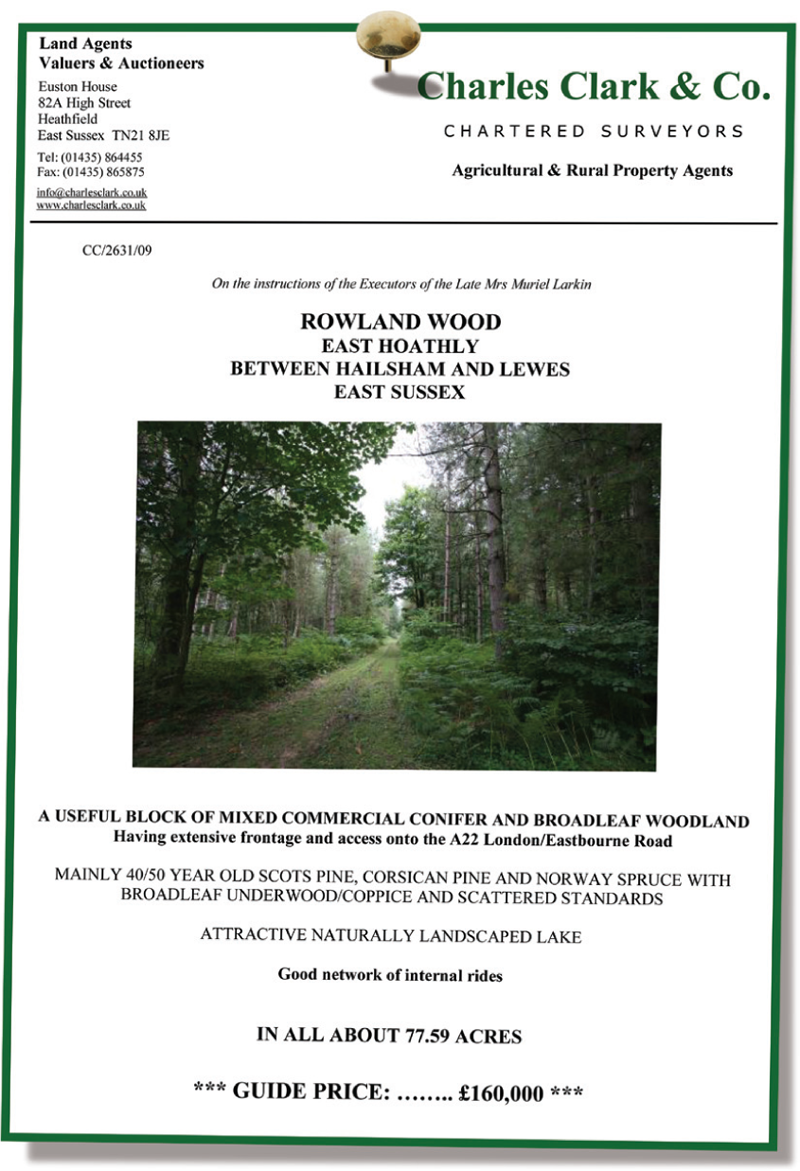
On 27th June 1887 an important discovery was made in an open area of rough heathland at Vert Wood in East Sussex. An unusual-looking moth was captured. At first its identity was a mystery but, after it was shown to local experts, it was declared that this moth was Scopula immorata, the first example of its kind found in Britain. Named after the Sussex town near its place of discovery the moth became known as the Lewes Wave. The Lewes Wave was found in Vert Wood and nowhere else in Britain. This wonderful old woodland was famous for its butterfly and moth diversity; lepidopterists would spend many hours here amongst the rides, glades and heath searching for Duke of Burgundy, High Brown Fritillary and moths such as the Cudweed and Orange Upperwing.
In the years following the discovery of the Lewes Wave this moth became highly sought after by collectors who returned year on year to take specimens. Meanwhile the habitat the moth depended on was vanishing; the heath was ploughed up, the old broadleaved trees were felled and replaced with serried rows of conifer. As time went by, collectors noted that the Lewes Wave became rarer and rarer – although this didn’t stop them catching the moth for their collections.
By the time the conservation cavalry arrived to save the moth it was a case of “too little, too late”. In 1953, an area of Vert Wood was designated a Site of Special Scientific Interest (SSSI) but by this time the moth was already in serious decline. The original SSSI designated area was too small – only 2 acres and, as a consequence, the last Lewes Wave was seen on 22nd June 1961. The conservation designation for this small corner of Sussex was the legacy of the Lewes Wave. In the hope that the moth would re-appear, conservation organisations managed this small part of Vert Wood which became known as Park Corner Heath. Meanwhile, there were major changes underway throughout the rest of our Sussex woodlands; they were becoming darker. As our woodlands fell into neglect the sunny rides and glades fell into shadow as the trees and scrub grew and blocked out the sunlight. In some woodland the old trees were felled and replaced by pines. This opened up the woods temporarily but these fast-growing conifers soon blocked out the sun again.
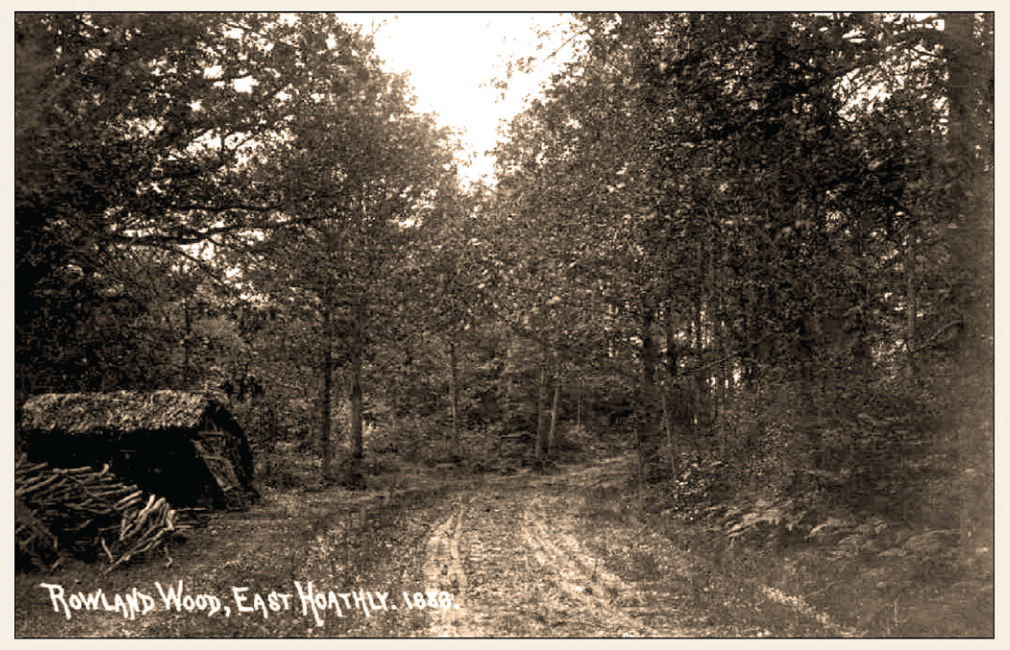 Rowland Wood circa 1910
Reproduced with the kind
permission of Colin Pratt
Rowland Wood circa 1910
Reproduced with the kind
permission of Colin Pratt
People began to notice that the small orange butterflies that once flew around our spring woodlands in such abundance were starting to vanish. The Pearl-bordered and Small Pearl-bordered Fritillary butterflies were familiar sights in woods across the county in the middle of the last century. However, these small woodland fritillaries found the warm, violet-rich habitat they required was harder to find each year and numbers plummeted.
In 1989, Butterfly Conservation took over the management of Park Corner Heath which had now grown to a reserve of almost 8 acres. The area was managed as an open glade on a coppice rotation while the rest of the woodland around it became darker and darker. Park Corner Heath was now a warm, sunlit oasis in a cold, shady desert. Here the Small Pearl-bordered Fritillary hung on. Meanwhile in woodlands all across the southeast the butterfly’s decline continued until Park Corner Heath became the only known site for this species in the region.
This made the Small Pearl-bordered Fritillary colony at Park Corner Heath extremely important – and extremely vulnerable. Without the efforts of Butterfly Conservation’s volunteers working hard to maintain the butterfly at this site we would now surely have one species less in Sussex. Over the years we have also looked to work with neighbouring woodland owners to encourage them to manage their land in a wildlife friendly way. We have had a lot of co-operation from our neighbours – but as woodlands are increasingly ‘lotted up’ and sold off in small chunks to different buyers it has become difficult to organise a co-ordinated approach to conservation management across the entire woodland. Working with other landowners means we will always be relying on their co-operation, goodwill and economic priorities.
So, in September 2009, when I first heard the rumour that the woodland adjacent to our Park Corner Heath reserve was up for sale it seemed like an opportunity that we simply could not miss. Rowland Wood, in the north of the Vert Wood complex, is almost 80 acres of mixed woodland. While it does contain some of those horrible, dark pine plantations it also has areas of mature beech and oak – some of which are remnants from the original Vert Wood which was so famous for its butterflies and moths centuries ago. Overall, the Rowland Wood had remained in reasonably good condition compared to the rest of Vert Wood. There were still open areas within the wood which supported Silver-washed Fritillary and White Admiral but the Small Pearl-bordered Fritillary had not been recorded here for many years. An artificial pond in the wood, originally excavated for duck shooting, held a rich variety of dragonfly and damselfly species as well as good populations of amphibians.
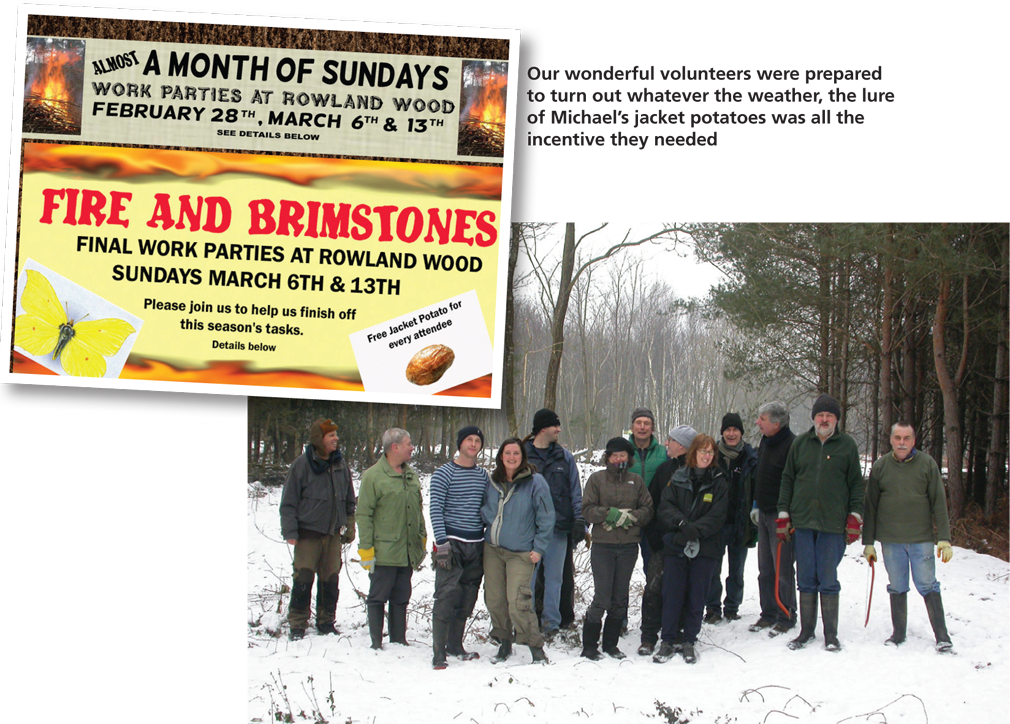
The woodland was to be sold at a sealed-bid auction on 21st October 2009. In the weeks leading up to this deadline there were numerous emails sent between Sussex branch and Butterfly Conservation’s Dorset Head Office. We could all see the potential that this woodland could hold for butterflies and wildlife and, being right next-door to Park Corner Heath, the woodland would give us the chance to expand our conservation management over almost 90 continuous acres. The problem was it was not going to be cheap.
"Rowland Wood was ours!"
After all the legal necessities the woodland was signed over to ButterflyConservation in February 2010. It wasn’t long until we stepped over the boundary line between Park Corner Heath and Rowland Wood and ceremoniously took down a small pine tree with a bow saw. Steve Wheatley and I marked off a number of trees that could be felled in order to create a network of rides and we hired contractors to bring their chainsaws and widen the rides nearest to Park Corner Heath. Our regular monthly work parties worked hard at the end of the winter of 2010 and tidied up the brash and debris the contractors left behind. The Small Pearl-bordered Fritillaries were not far behind us and in the spring of 2010 a few individuals couldn’t resist those new rides and flew off our original Park Corner Heath reserve and into the new habitat.
Meanwhile a long-term management plan started to take shape and in the winter of 2010/2011 the contractors returned with their chainsaws and cut down a lot more of the pine trees. More rides were opened up and more sunlight came streaming through to the woodland floor. We now had the problem of shifting some of the logs for stacking but were fortunate to be joined by Marie Buss and Jack the Horse. Our hardworking Branch volunteer, Dave Mitchell, hadn’t been too keen when I had suggested tying a harness to him so he could drag some logs – but Jack didn’t seem to mind and, for the price of a few carrots, got to work on the reserve.
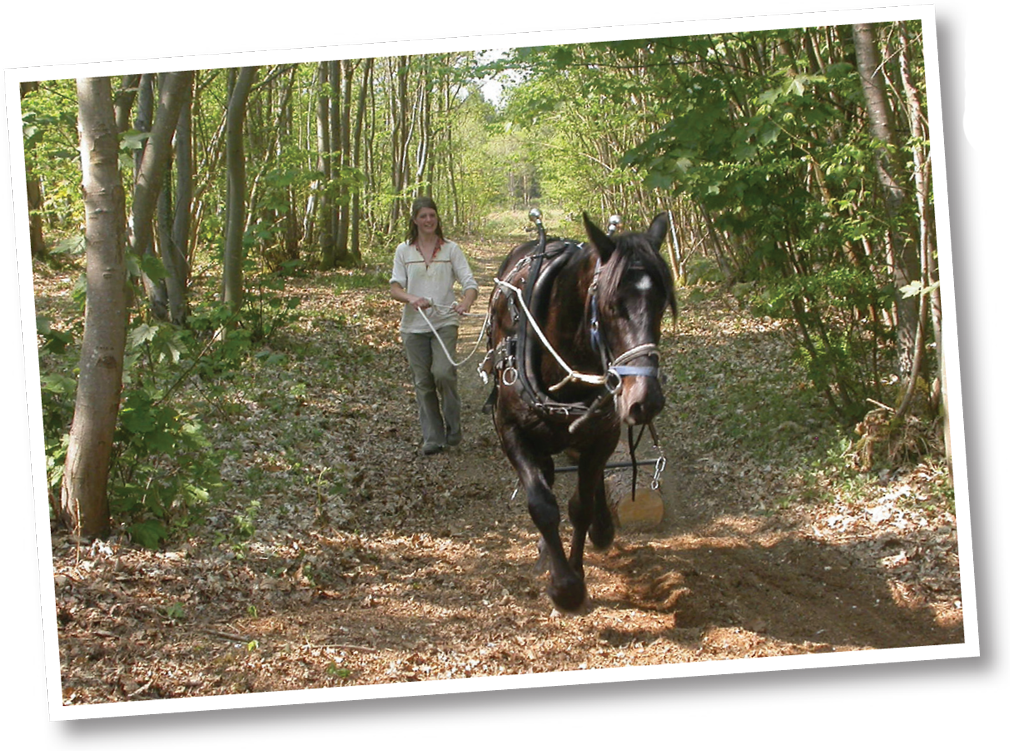 Jack The Horse, conservation volunteer and star of the officialopening ceremony
Jack The Horse, conservation volunteer and star of the officialopening ceremony
The main problem was that the woodland floor was now a sea of pine branches – it’s amazing how just one felled pine tree can leave a large area of ground covered in waist high brash. I was confident that our monthly work parties would be able to clean up this mess and our BC volunteers got to work sawing, dragging and burning the pine. But after the first work party there seemed to be more pine left than when we had started! We decided to double the number of work parties to two each month. More keen volunteers joined the regulars - but it still seemed like it was not enough. By the end of the work party season in 2011 we were holding weekly work parties – and still having impromptu work parties in the middle of the week. Finally, by the beginning of March, we had cleared up the brash and could see the woodland floor – just in time for the start of spring– and just in time for my wedding, too. I swear a few pines needles fell out of my suit as I walked down the aisle!
When I returned to Rowland Wood a few weeks later I was amazed by the sight. The area which had previously been row upon row of dark pine and where the Branch work parties had toiled in the cold and rain had transformed into a beautiful open woodland ride. The floor was a carpet of bluebells, primroses and violets where male Brimstones and Orange-tips patrolled along the sunny woodland edge.
A few months later, on 11th June 2011, a marquee was erected in this ride, the table was laid with cups of tea and lemon drizzle cake and staff from Butterfly Conservation Head Office, trustees and funders and Sussex Branch volunteers past and present attended the grand opening of Rowland Wood. Butterfly Conservation’s Chief Executive, Dr Martin Warren, said a few words as did our very own Graham Parris, Neil Hulme and myself but we were all upstaged by Jack the Horse who had the honour of ceremonially pulling the silken sheet off the Rowland Wood sign to announce, in his own equine way, that Rowland Wood was officially our new butterfly reserve.
There is still plenty more work to be undertaken in Rowland Wood. The next major piece of work will be the felling of a large block of mature conifer in the north of the reserve. Over the past few years the value of timber has increased - we may now actually get some money for this wood; money which can go back into the future management of the reserve.
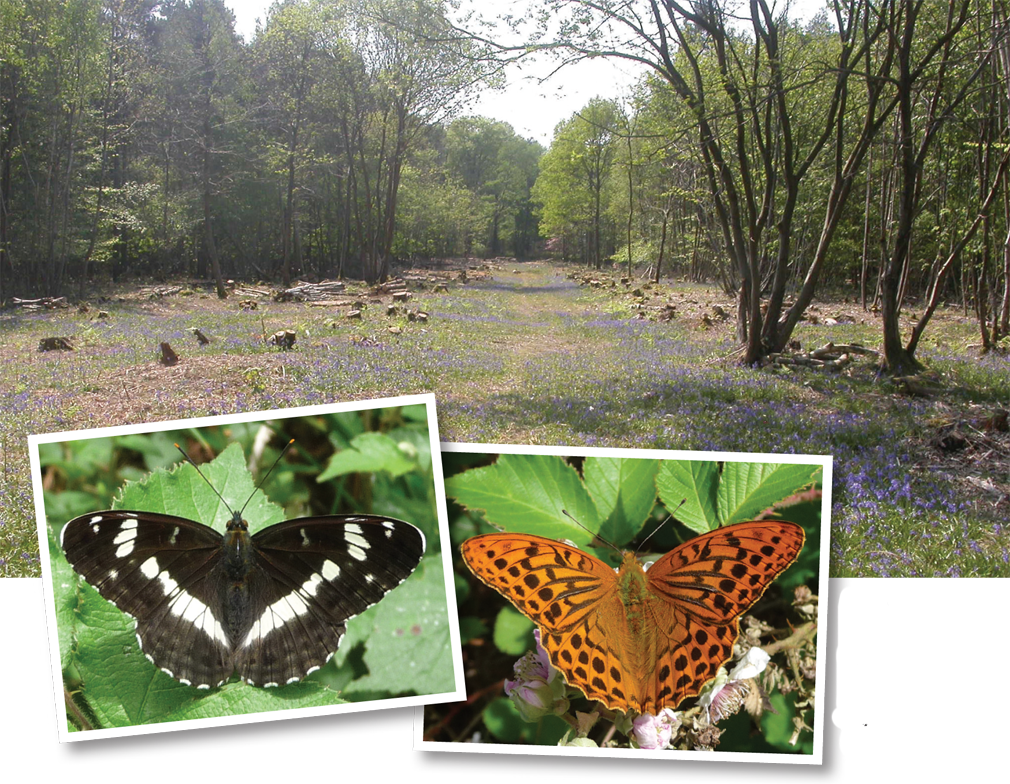 White Admiral and Silverwashed Fritillary, can already be seen throughout the wood
White Admiral and Silverwashed Fritillary, can already be seen throughout the wood
Rowland Wood is already beginning to take shape and, most importantly, the Small Pearl-bordered Fritillary is now breeding here. We hope that it will eventually spread throughout the whole wood giving this butterfly a more secure future in this part of England. Our thanks must go to Miss Pamela Lewis whose kind donation allowed us to buy this woodland and to all our volunteers, past and present, who for many decades have given their time and energy to conserve this area for the benefit of both the wildlife and the people who care about it.
Sadly, one species we are not expecting to find in Rowland Wood is the Lewes Wave. The official opening of this wood came almost 50 years to the day that this moth became extinct in Britain. But this absent moth started a chain of events which has culminated in almost 90 acres of woodland being secured for wildlife conservation in Sussex and which has hopefully prevented other rare species from vanishing from this part of the country.


